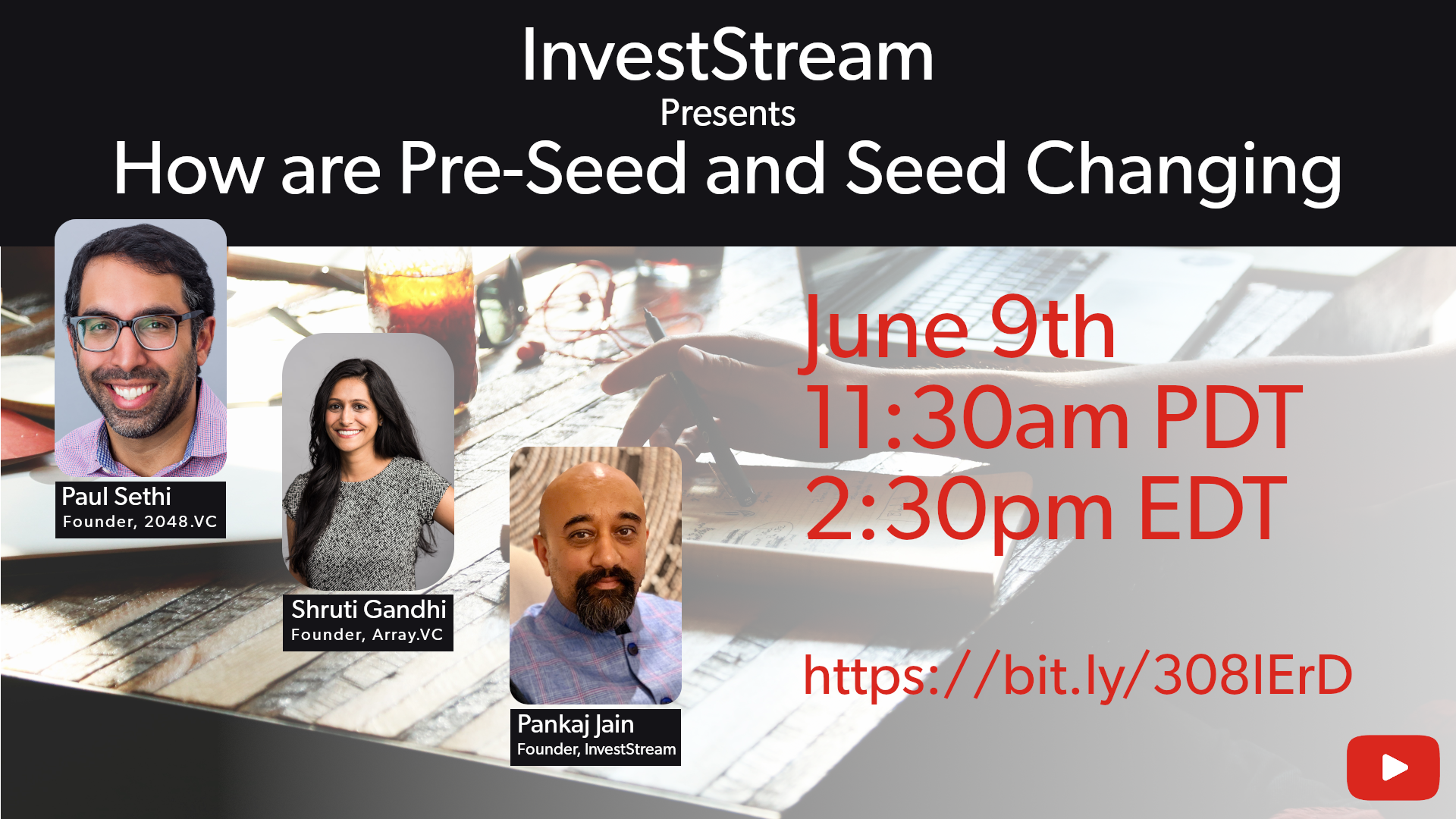Tag: funding
-

How are Pre-Seed and Seed Changing in 2020?
A lot is changing in the startup world. Even before getting hit with COVID-19, the definitions of pre-seed, seed, post-seed/pre-series A were changing at a fast clip. Many early-stage VCs were moving downstream, writing larger checks and investing in later rounds. At the same time, larger, late-stage VCs were either ramping up their scout programs…
-
What makes a startup venture fundable?
There are a multitude of things that help make #startups attractive to #angel #investors & #venturecapitalists. In this video, I shared 3 things that I think are critical to a startup being venture fundable. There are a few things that should be on the checklist of any startup before they think of approaching investors other…
-
4 Tips for raising money for your crypto/blockchain or tech startup
In this video, I answer a viewer’s question about raising money to take one’s idea and turn it into a reality. The question was focusing on ideas in the crypto/blockchain world as well as more traditional tech startups. I share 4 things I believe are important before one starts fundraising. Please don’t forget to subscribe…
-
InvestStream US-India Episode 1
In this first episode of InvestStream, Harjit Singh and I discuss the unemployment report and wage growth in the US, interest rate and bond yields, US economic strength, US-China trade war, Uber’s IPO plans and the valuation, startup funding in 2018 in India, SoftBank and their investments in India, and much much more.
-
Lean Startup Presentation
This is a nice presentation on the need for startups to be lean and how agile development can help the process. It would have been nice to have audio to go along with the presentation by Steve Blank (Board Member) and Eric Ries (Co-founder and Board Observer) of IMVU. IMVU was founded in 2004 and…